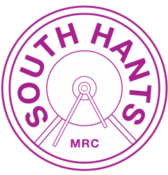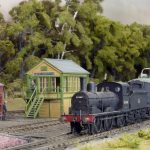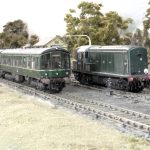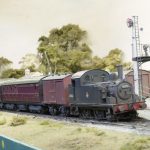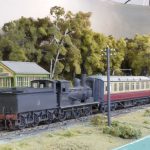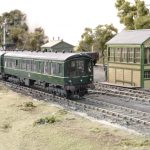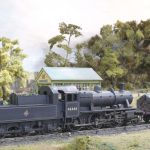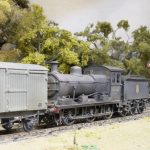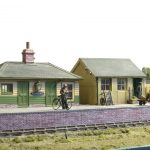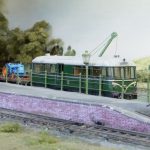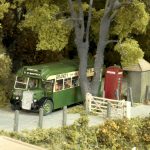Great Bardfield by David Hawkins (4mm scale, P4 gauge)
Rural Essex
Like most areas of the country, Essex had its fair share of proposed lines which never came to fruition. Great Bardfield is a “might have been” station on a fictitious extension to the Colne Valley and Halstead Railway. The line connected Great Yeldham on the CV & H to Ongar on the Great Eastern Railway, thus providing a direct, if slow, link to London.
The model portrays rural Essex from the mid 1950s to the early 1960s. Like many stations in the area, the village it claims to serve is a good mile away. Decline and ultimate closure was inevitable once roads were improved enough to support local buses and freight hauliers. The line had a brief resurgence during the war but the Great Bardfield to Great Yeldham section was closed to passenger traffic shortly after. Goods traffic continued on this section until closure and also served RAF Wethersfield which, for a period after the war, was used as a bomb and ammunition dump. Complete closure came in 1962, before even Dr Beeching could do his worst.
The operating schedule covers the period from 1954 to 1962. Initially all trains are steam hauled and some mixed trains run. By 1958 diesel locomotives begin to appear on goods services although passenger trains continue to be steam hauled. Following a brief, but unsuccessful attempt to introduce rail buses, diesel multiple units take over the passenger service until inevitable closure.
Great Bardfield has been exhibited well in excess of 100 times since it first made its debut on the exhibition circuit in 1992. Its appearances are now limited to a couple of time a year in deference to the age of the layout (and its builder!).
Colne Valley – fact and fiction
The Colne Valley and Halstead Railway opened between 1860 and 1862 and remained an independent concern until amalgamated with the LNER at the grouping in 1923. It survived into British Railways ownership, finally closing to passengers at the end of 1961 and to all traffic in April 1965. The line ran from the Great Eastern station at Chappel and Wakes Colne (still open and the headquarters of the Stour Valley Railway Preservation Society) to Haverhill, originally to its own terminus, but latterly to the Great Eastern station in the town. A number of extensions were proposed, principally north to Cambridge and south to Colchester but none materialised.
My layout is based on a station at Great Bardfield, on the road to Finchingfield, in time honoured fashion some distance from the local community. In theory, the line runs from Great Yeldham on the CV&H, crosses the Great Eastern at Dunmow and finishes at an end-on junction with the same company at Ongar, latterly part of London Transport’s Central Line. The CV&H did propose a similar line but it was never built. A station at Great Bardfield did in fact figure in a number of schemes mooted by other concerns, principally the Elsenham and Thaxted and the Central Essex Light Railway.
Exhibition Managers Notes
- Model: Overall length is 17ft including Fiddle Yards – depth is 2ft
- Space required: Overall footprint 20ft by 6ft
- One table and two chairs required
- Four operators
- Operated from front
- Layout style: Diorama style with built in lighting, track height is approximately 4ft
- Transport: Two cars required
- Insurance valuation: £12,000 (layout £3000; stock £9000)
